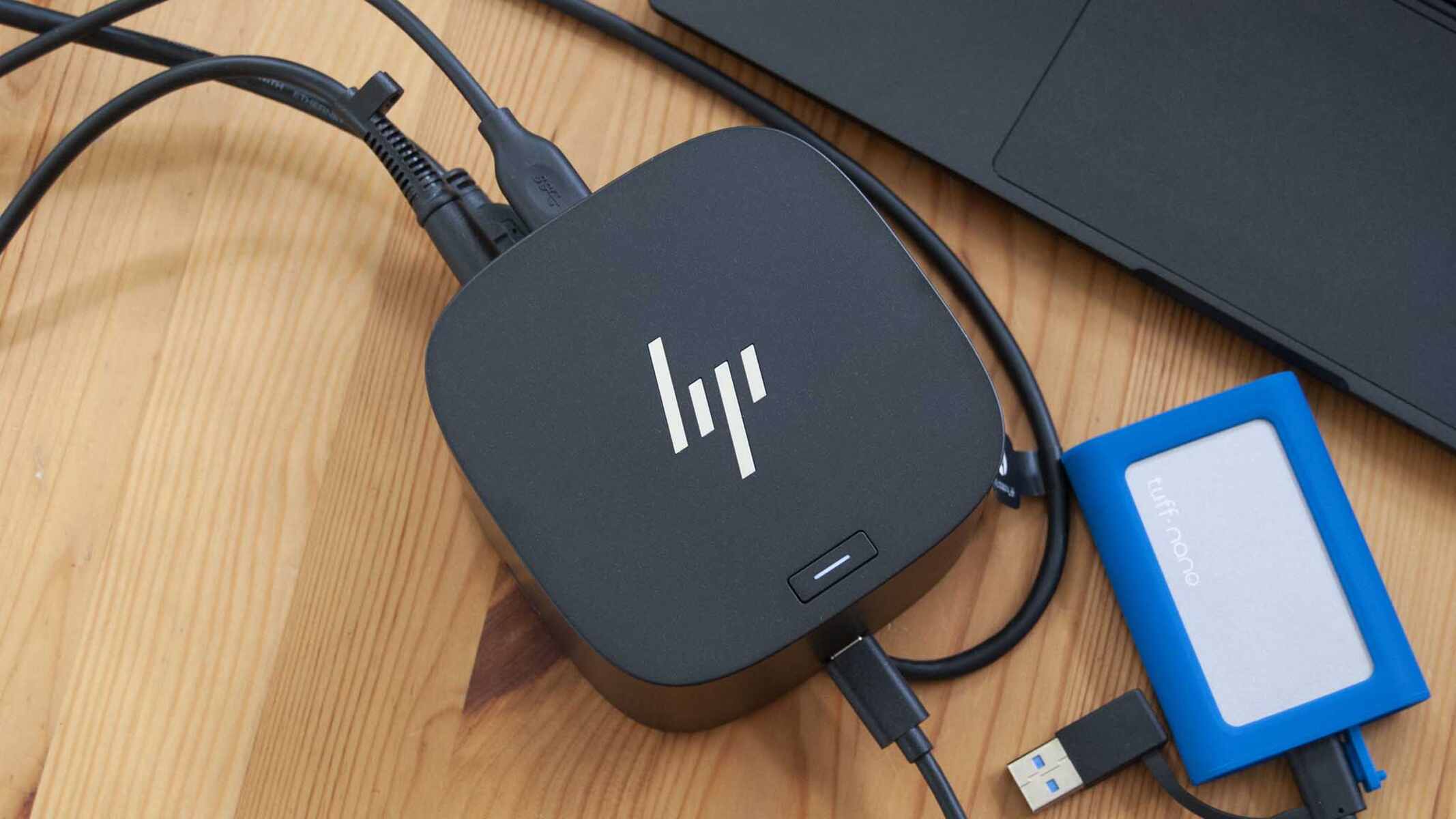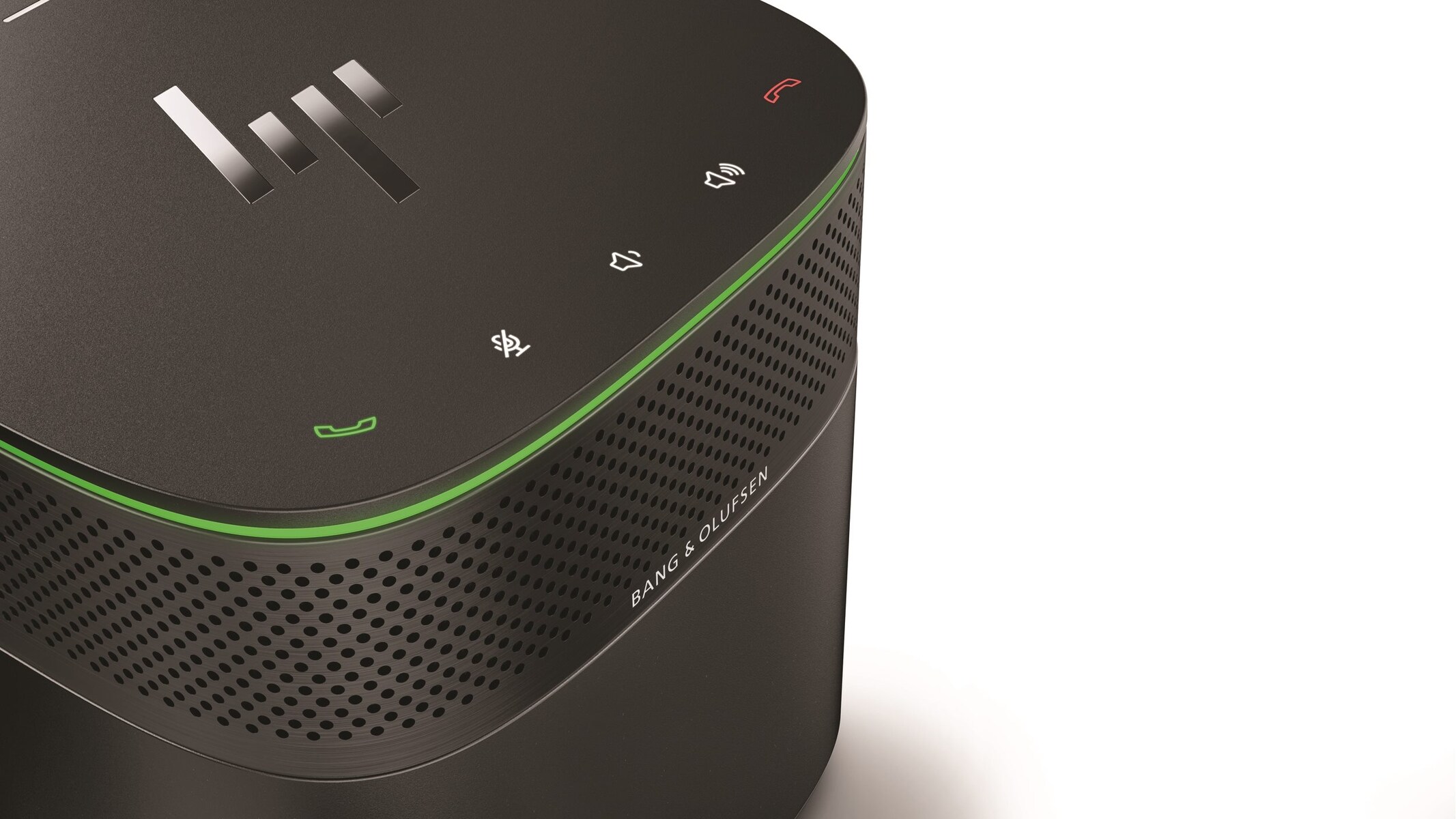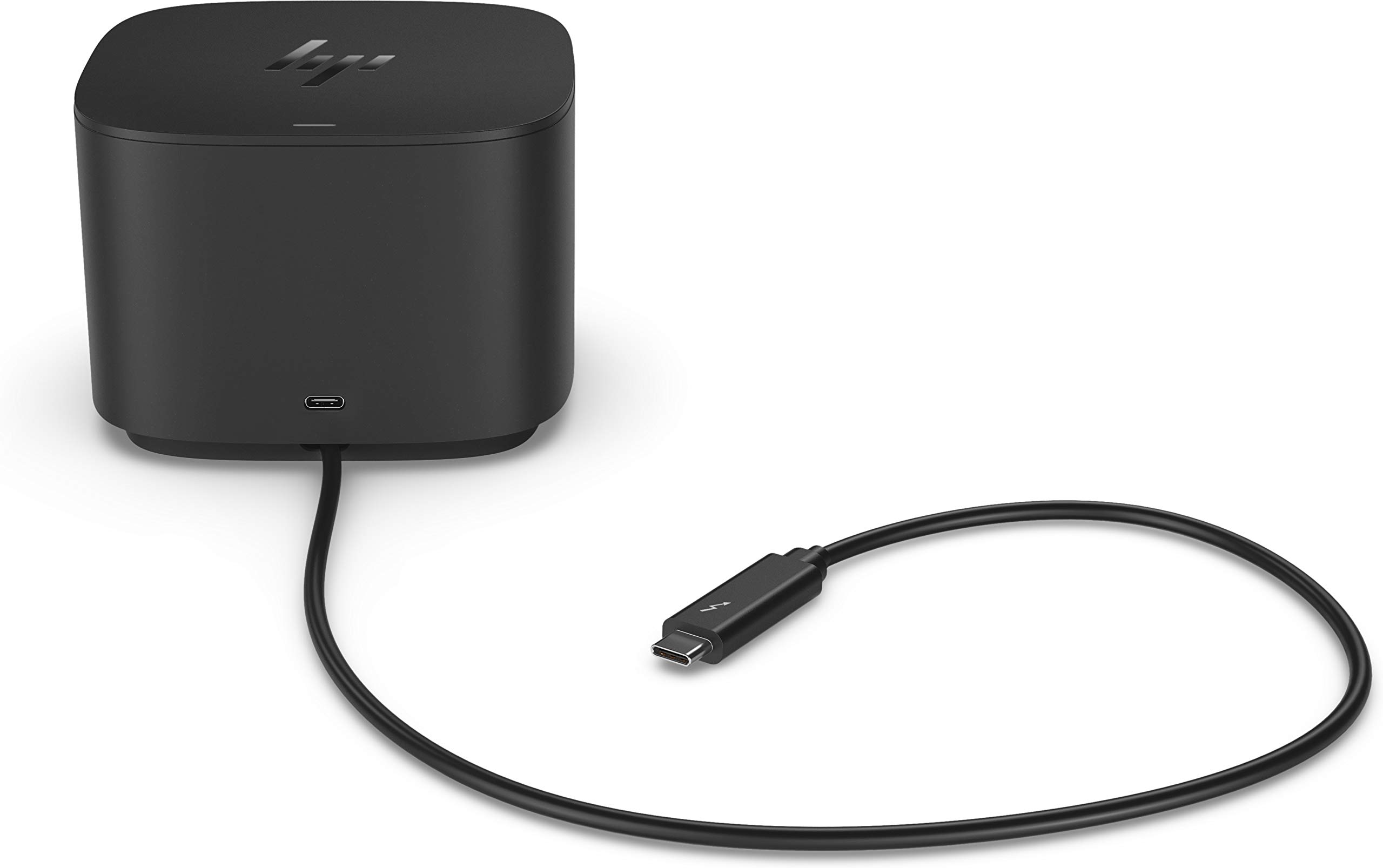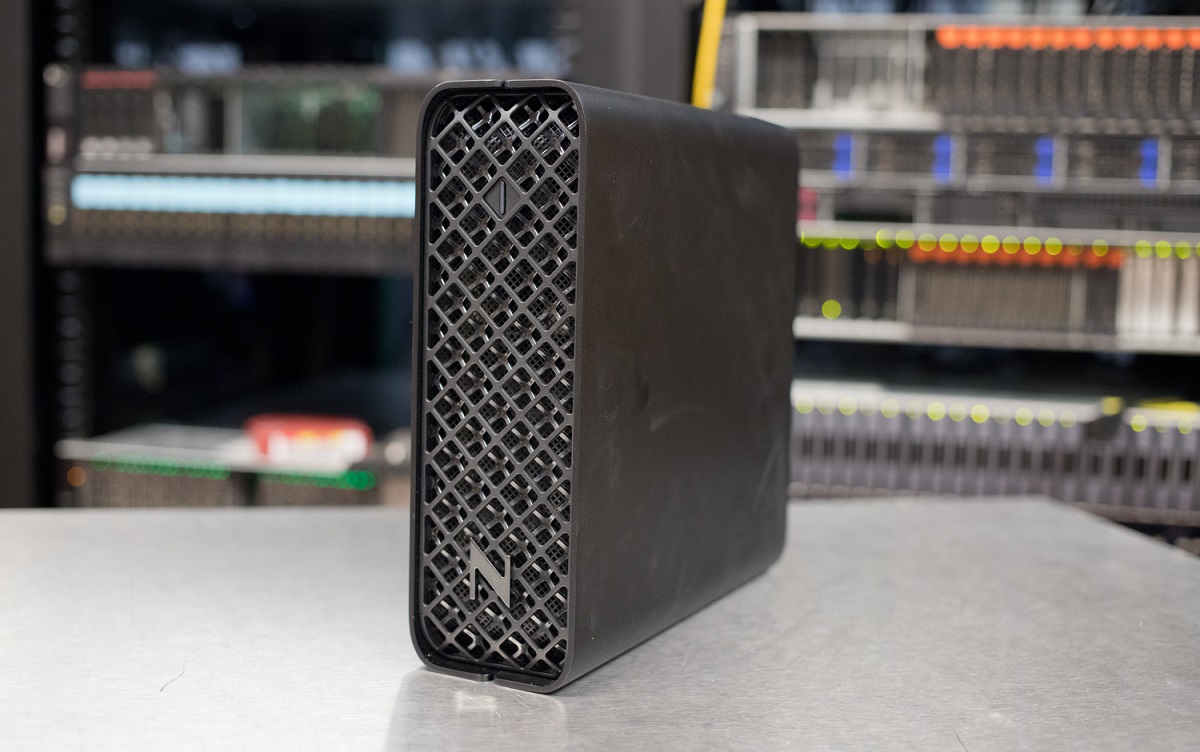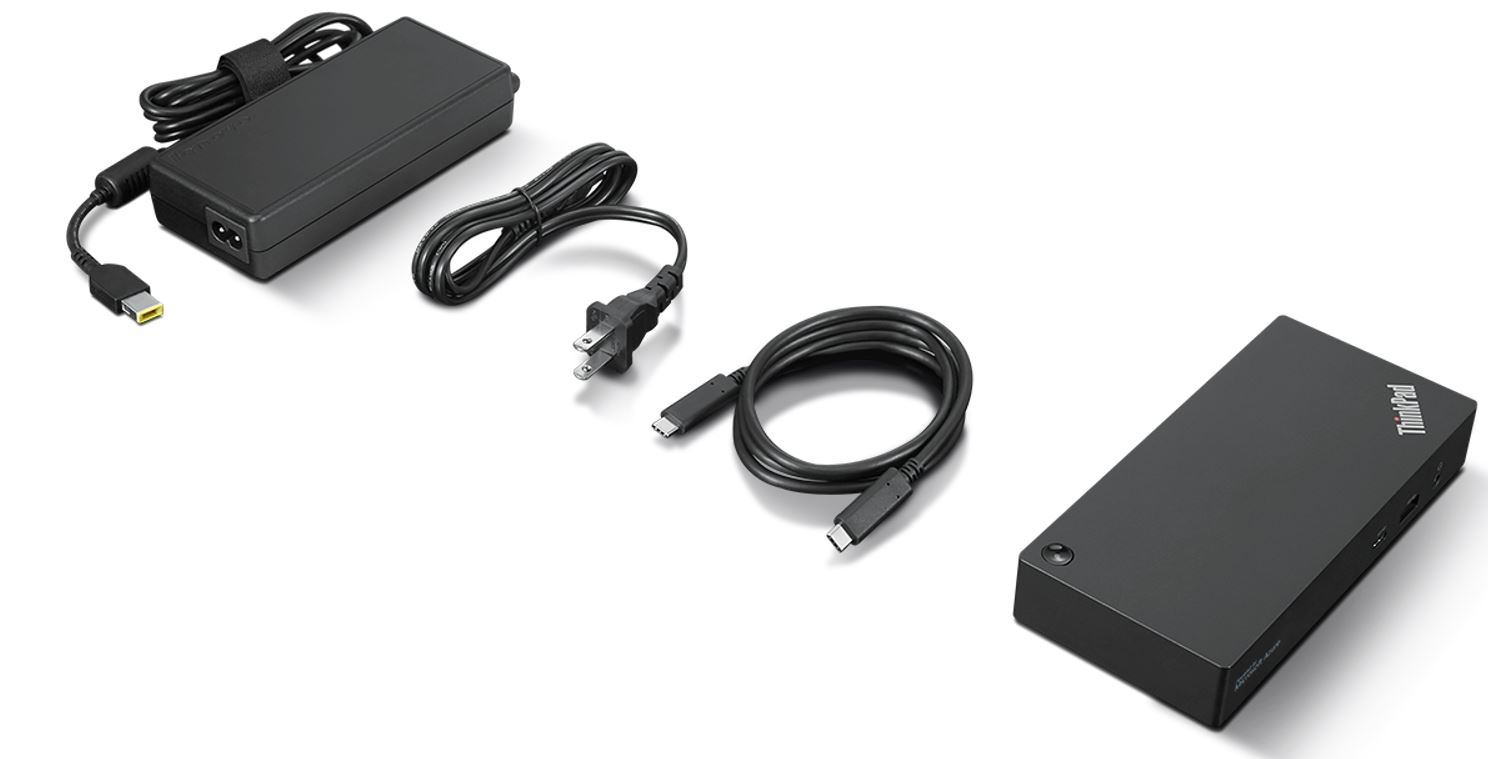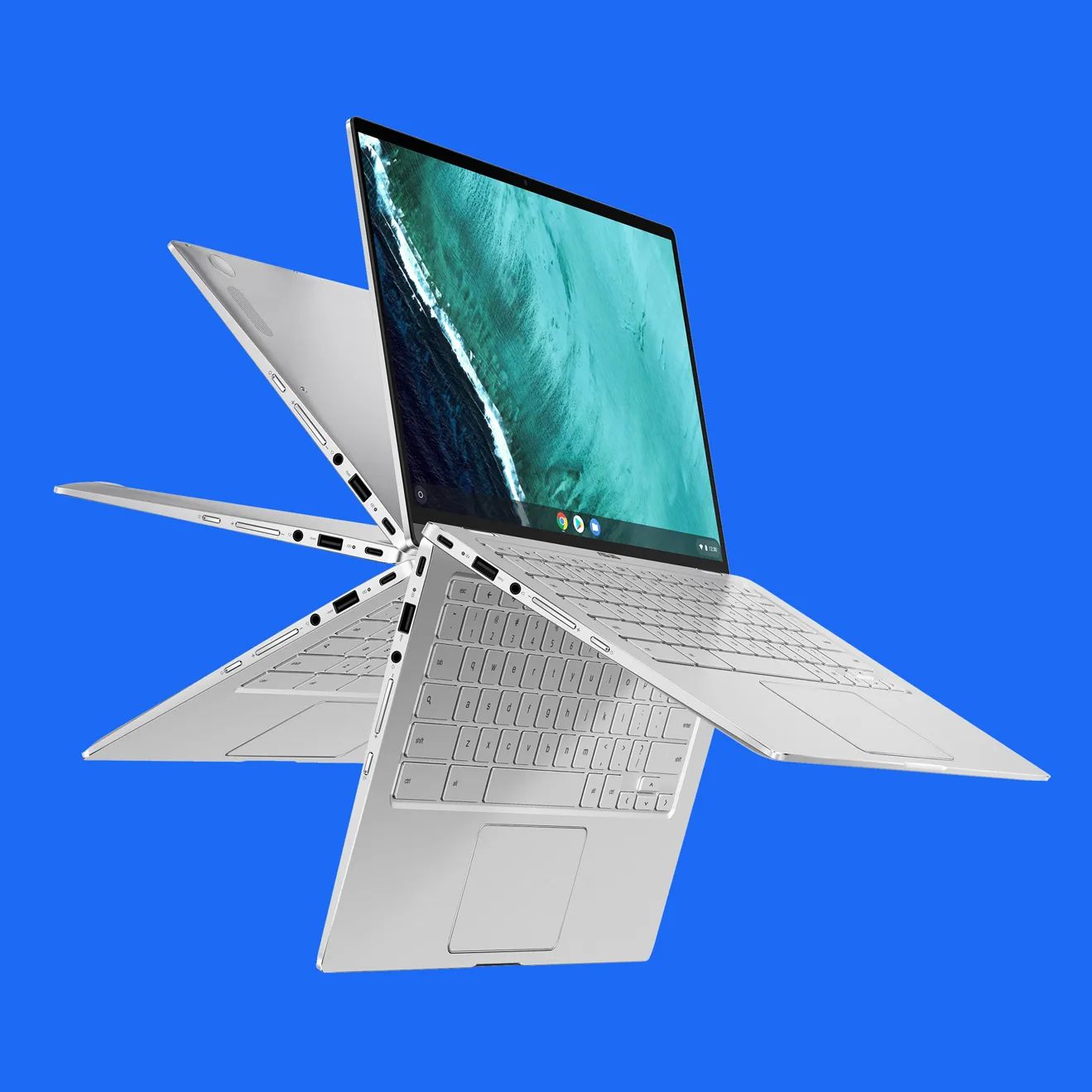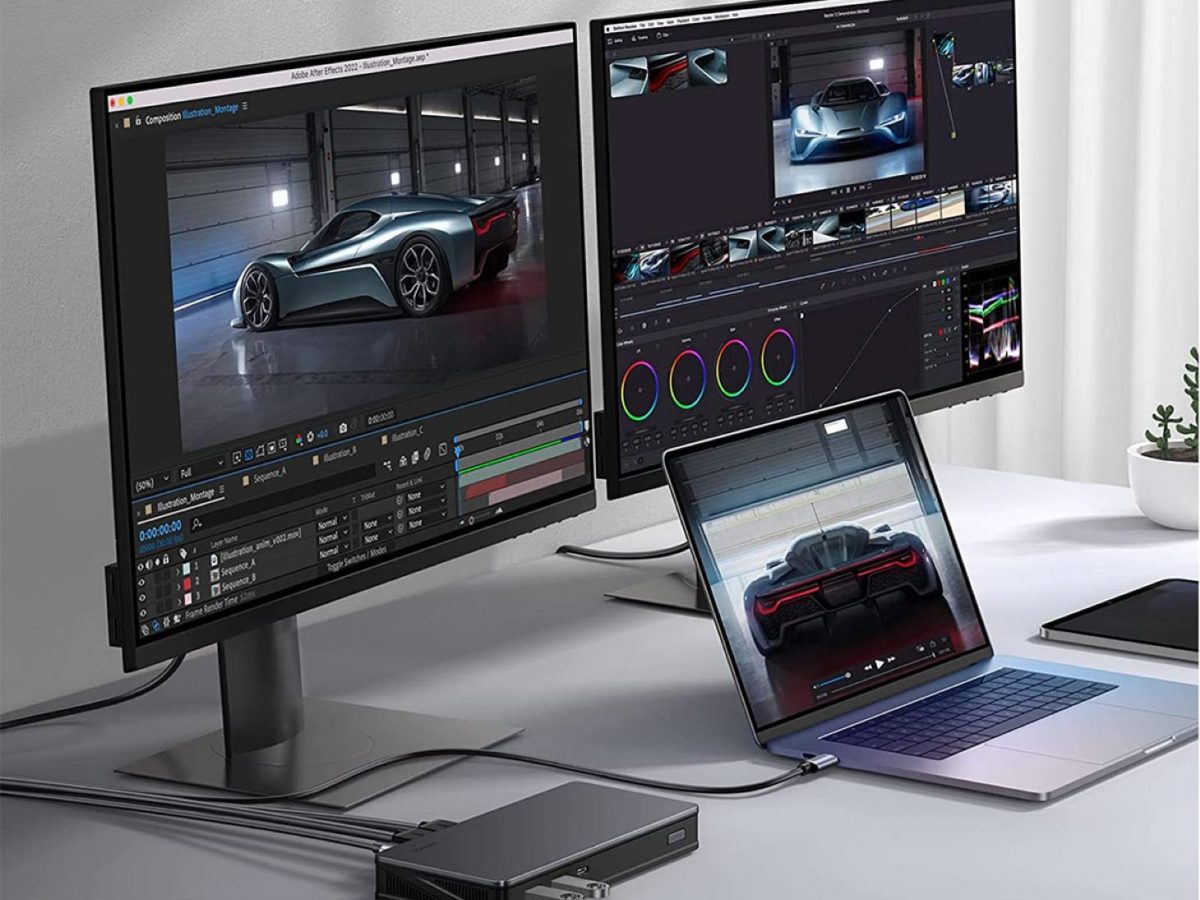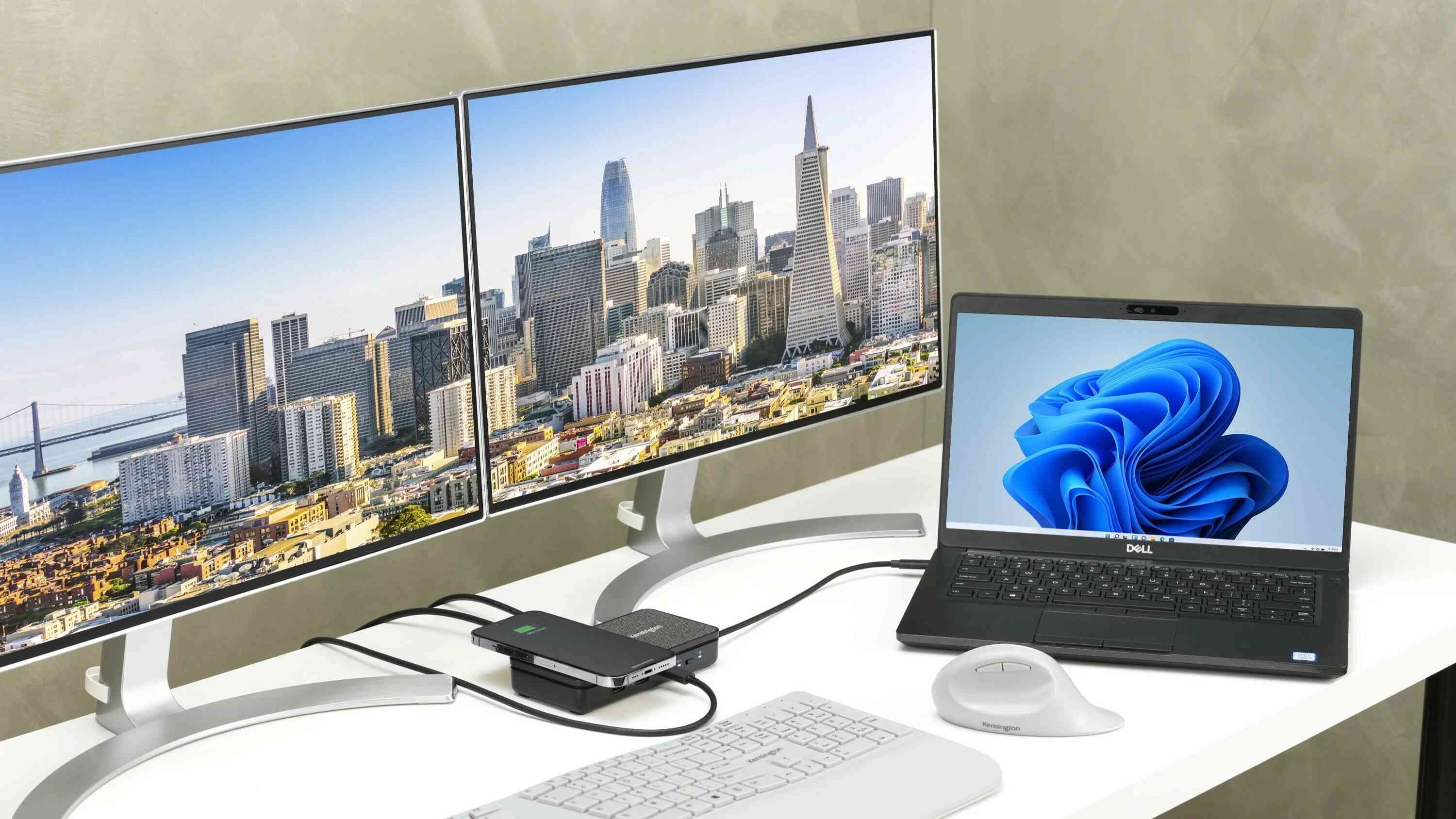Introduction
Are you tired of cluttered desks and messy cables? Look no further than the HP Thunderbolt Dock, a versatile solution for improved connectivity and productivity. Whether you’re a professional working from home or an avid gamer looking to streamline your gaming setup, the HP Thunderbolt Dock offers a seamless way to connect multiple devices to your computer.
Designed with convenience and efficiency in mind, the HP Thunderbolt Dock eliminates the need for constantly plugging and unplugging cables. With just a single connection to your laptop or desktop, you can expand your workspace and effortlessly connect to a variety of peripherals.
In this article, we’ll explore the features and benefits of using the HP Thunderbolt Dock, as well as how to set it up and troubleshoot any potential issues. Whether you’re a technophile or a novice user, this guide will provide you with the knowledge you need to make the most of your HP Thunderbolt Dock.
So, if you’re ready to declutter your workspace and enjoy seamless connectivity, let’s dive into the world of the HP Thunderbolt Dock and discover how it can revolutionize the way you work or play.
What is the HP Thunderbolt Dock?
The HP Thunderbolt Dock is a cutting-edge docking station that enhances the connectivity of your laptop or desktop computer. It provides a seamless way to connect and disconnect multiple peripherals and devices, allowing for a more efficient and clutter-free workspace.
Equipped with Thunderbolt technology, the HP Thunderbolt Dock offers lightning-fast data transfer speeds and supports multiple high-resolution displays, making it ideal for professionals, content creators, and gamers alike. With its sleek design and powerful functionalities, this docking station is the perfect companion for those who require versatility and convenience in their computing experience.
One of the standout features of the HP Thunderbolt Dock is its ability to consolidate cable connections into a single Thunderbolt 3 cable. This means that you no longer need to plug and unplug various cables every time you want to connect or disconnect a device. Simply connect your laptop or desktop to the dock, and you’re ready to go.
Additionally, the HP Thunderbolt Dock offers a wide range of connectivity options. It typically includes multiple USB ports, an HDMI or DisplayPort for connecting external displays, an Ethernet port for wired networking, and audio jacks for headphones and microphones. Some models also come with extra features like SD card readers and additional Thunderbolt 3 ports.
With the HP Thunderbolt Dock, you can turn your laptop into a powerful workstation with ease. Whether you need to connect a monitor for extended screen real estate, a keyboard and mouse for a more ergonomic setup, or external storage devices for seamless data transfer, this docking station has got you covered.
Now that you have a better understanding of what the HP Thunderbolt Dock is, let’s explore the numerous benefits it offers and how it can enhance your computing experience.
Benefits of Using the HP Thunderbolt Dock
The HP Thunderbolt Dock brings forth a multitude of benefits that enhance your productivity and streamline your workflow. Here are some key advantages of using this innovative docking station:
- Effortless Connectivity: With the HP Thunderbolt Dock, you can easily connect and disconnect multiple devices with a single cable. No more hassle of plugging and unplugging cables every time you need to switch devices or peripherals.
- Expanded Workspace: By connecting your laptop or desktop to the HP Thunderbolt Dock, you gain access to a wide range of ports and interfaces, allowing you to connect multiple displays, keyboards, mice, speakers, and more. This expanded workspace boosts productivity and enables multitasking.
- High-Speed Data Transfer: Thanks to the Thunderbolt 3 technology, the HP Thunderbolt Dock offers lightning-fast data transfer speeds. You can transfer large files, backup data, and access external storage devices with remarkable speed and efficiency.
- Improved Graphics Performance: The HP Thunderbolt Dock supports multiple high-resolution displays, enabling you to create a immersive visual experience. Whether you’re a graphic designer, video editor, or gamer, you can enjoy stunning visuals and seamless graphics performance.
- Powerful Charging Capabilities: Some models of the HP Thunderbolt Dock provide power delivery, allowing you to charge your laptop or devices while they are connected to the dock. This eliminates the need for separate chargers and keeps your workspace tidy.
- Convenient Audio Configuration: The HP Thunderbolt Dock features audio jacks for headphones and microphones, enabling you to enjoy high-quality sound or participate in audio conferences without the need for additional adapters or cables.
- Enhanced Network Connectivity: With the built-in Ethernet port, the HP Thunderbolt Dock provides reliable and fast wired network connectivity. Whether you need a stable internet connection for work or gaming, this docking station ensures a seamless and uninterrupted connection.
- Easy Setup and Configuration: Setting up the HP Thunderbolt Dock is quick and straightforward. Simply connect your laptop or desktop to the dock using the Thunderbolt 3 cable and install the necessary drivers, if required. It’s a hassle-free process that gets you up and running in no time.
These are just a few of the many benefits that the HP Thunderbolt Dock brings to the table. By investing in this docking station, you can optimize your workspace, improve connectivity, and enhance your overall computing experience.
Compatibility of the HP Thunderbolt Dock
The HP Thunderbolt Dock is designed to be compatible with a wide range of laptops and desktop computers. However, it’s important to ensure that your device meets the necessary requirements for seamless functionality. Here’s what you need to know about the compatibility of the HP Thunderbolt Dock:
Operating System Compatibility: The HP Thunderbolt Dock is compatible with various operating systems, including Windows and macOS. However, it’s essential to check the compatibility of your specific model with the operating system version installed on your device. Certain features or functionalities may require specific software drivers or updates.
Hardware Compatibility: The HP Thunderbolt Dock is typically equipped with Thunderbolt 3 technology, which offers the most extensive compatibility with a variety of devices. However, it’s crucial to ensure that your device supports Thunderbolt technology. Some older laptops or desktops may not have a Thunderbolt 3 port, in which case the docking station may not be compatible.
Power Requirements: The HP Thunderbolt Dock requires an external power source to function properly. Ensure that your power supply meets the specifications provided by HP. Insufficient power supply may result in limited functionality or unstable performance of the dock.
Display Compatibility: The HP Thunderbolt Dock supports multiple displays, but it’s important to consider the maximum resolution and refresh rate supported by your device. Ensure that your displays are compatible with the docking station’s capabilities to avoid any issues with display connectivity or performance.
Peripheral Compatibility: The HP Thunderbolt Dock offers various connectivity options, such as USB ports, audio jacks, and Ethernet ports. To ensure compatibility, check the specifications of the devices you intend to connect to the dock. It’s recommended to use high-quality cables and adapters that are compatible with Thunderbolt technology to avoid any compatibility issues.
Driver and Firmware Updates: To ensure optimal performance and compatibility, it’s important to regularly check for driver and firmware updates for both your device and the HP Thunderbolt Dock. These updates often include bug fixes, performance improvements, and enhanced compatibility with the latest operating systems and devices.
Overall, while the HP Thunderbolt Dock boasts impressive compatibility, it’s crucial to verify the compatibility requirements for your specific device. Refer to HP’s official documentation or consult customer support for detailed information on compatibility with your laptop or desktop computer.
Setting Up the HP Thunderbolt Dock
Setting up the HP Thunderbolt Dock is a straightforward process that can be completed in just a few simple steps. Follow the instructions below to get your docking station up and running:
- Check the Contents: Start by ensuring that you have received all the necessary components with your HP Thunderbolt Dock. Typically, this includes the docking station itself, a Thunderbolt 3 cable, and a power adapter. If any components are missing or damaged, contact HP customer support for assistance.
- Position the Dock: Choose a suitable location for the HP Thunderbolt Dock near your laptop or desktop computer. Ensure that there is enough space to connect and disconnect devices easily. It’s recommended to place the dock on a stable surface to prevent any accidental movement or damage.
- Connect the Thunderbolt 3 Cable: Take the Thunderbolt 3 cable and connect one end to the Thunderbolt 3 port on the back of the HP Thunderbolt Dock. The other end of the cable should be connected to the Thunderbolt 3 port on your laptop or desktop computer. Make sure it is securely connected to avoid any accidental disconnections.
- Connect Power Supply: Connect the power adapter to the HP Thunderbolt Dock and plug it into a power outlet. Ensure that the power supply is compatible with the dock’s requirements. This will provide the necessary power to operate the dock and charge connected devices, if applicable.
- Install Required Drivers: Depending on your operating system, you may need to install specific drivers or software to ensure full functionality of the HP Thunderbolt Dock. Visit the official HP website or refer to the documentation provided with the dock for instructions on driver installation. Ensure that your drivers are up to date for optimal performance.
- Power On the Dock: Once all the connections are in place, power on the HP Thunderbolt Dock by pressing the power button or switch, if available. You may notice LED indicators on the dock that indicate its power status and connectivity.
- Verify Connectivity: After powering on the dock, verify that your laptop or desktop computer recognizes the HP Thunderbolt Dock and its connected peripherals. Check if devices such as external displays, USB devices, and audio devices are detected. If any issues arise, consult the documentation or reach out to HP support for troubleshooting assistance.
With these simple steps, you can quickly set up the HP Thunderbolt Dock and start enjoying the benefits of enhanced connectivity and productivity in your workspace.
Connecting Devices to the HP Thunderbolt Dock
The HP Thunderbolt Dock provides a convenient way to connect a variety of devices and peripherals to your laptop or desktop computer. Here’s a step-by-step guide on how to connect different devices to the HP Thunderbolt Dock:
- External Display: Connect your external display to the HDMI or DisplayPort on the HP Thunderbolt Dock. Depending on your display’s interface, you may need an adapter or cable to ensure compatibility. Once connected, your computer should detect the external display automatically.
- USB Devices: The HP Thunderbolt Dock typically offers multiple USB ports for connecting various USB devices. Simply plug in your USB devices, such as keyboards, mice, external hard drives, printers, or USB hubs, into the available USB ports on the dock. Your computer should recognize the devices just as if they were directly connected.
- Audio Devices: To connect headphones, speakers, or microphones, use the audio jacks on the HP Thunderbolt Dock. Simply plug in the respective audio devices into the appropriate audio jacks on the dock. Ensure that the audio settings on your computer are configured to use the connected audio devices.
- Network Connection: For a wired network connection, plug an Ethernet cable into the Ethernet port on the HP Thunderbolt Dock and connect the other end to your router or modem. This provides a stable and fast network connection for your computer.
- Other Peripherals: If you have other peripherals like external storage devices, cameras, or SD cards, consult the available ports and interfaces on the HP Thunderbolt Dock. Connect the peripherals to the corresponding ports, such as USB ports or SD card slots, to access and use them with ease.
- Power Delivery: Some models of the HP Thunderbolt Dock support power delivery, allowing you to charge your laptop or devices while connected to the dock. Verify if your dock supports this feature and connect your device’s charging cable to the designated power delivery port on the dock.
Once you have connected all your desired devices to the HP Thunderbolt Dock, your computer should recognize them as if they were directly connected to its ports. Ensure that the drivers for your connected devices are installed and up to date to ensure optimal performance.
Remember to refer to the documentation provided with your specific model of the HP Thunderbolt Dock for any additional guidance or specific instructions on connecting devices.
Using Display Options with the HP Thunderbolt Dock
The HP Thunderbolt Dock offers a variety of display options to enhance your viewing experience and increase productivity. Whether you need a single external monitor or multiple displays for multitasking, the Thunderbolt Dock has you covered. Here’s how to make the most out of the display options with the HP Thunderbolt Dock:
- Single External Monitor: To connect a single external monitor, use the HDMI or DisplayPort on the Thunderbolt Dock. Ensure that your monitor supports the interface provided by the dock. Use a compatible cable or adapter to connect the monitor to the corresponding port on the dock. Once connected, your computer should automatically detect and configure the display settings for the external monitor.
- Dual Monitors: If you prefer a dual monitor setup, you can connect two external monitors to the HP Thunderbolt Dock. Depending on the specific model of the Thunderbolt Dock, you can utilize one HDMI port and one DisplayPort for dual display functionality. Connect each monitor to the respective port, making sure they are compatible with the dock’s capabilities. Your computer should recognize both displays and allow you to extend or mirror your desktop across them.
- Multiple Monitors: Some HP Thunderbolt Dock models support connecting more than two external monitors. These docks typically have additional DisplayPort or Thunderbolt 3 ports that can be used to connect additional monitors. Verify the specifications of your Thunderbolt Dock to determine the maximum number of monitors it can support, and connect them accordingly.
- Display Arrangement and Settings: Once your external monitors are connected to the Thunderbolt Dock, you can customize their arrangement and settings according to your preference. Access the display settings on your computer’s operating system and configure the resolution, orientation, and layout for each monitor. This allows you to create a seamless and efficient workspace tailored to your specific needs.
- Extended Desktop and Multi-Tasking: With multiple displays connected to the Thunderbolt Dock, you can enjoy an expanded desktop and take advantage of the increased screen real estate. This allows for easier multitasking, as you can have different applications or windows open on separate monitors. Drag and drop files, spreadsheets, and other content between the displays for a smoother workflow.
- Gaming and Entertainment: If you are a gamer or enjoy multimedia entertainment, connecting your laptop or desktop to the Thunderbolt Dock can significantly enhance your experience. With the ability to connect high-resolution displays and access multiple screens simultaneously, you can immerse yourself in stunning graphics and engage in a truly immersive gaming or entertainment setup.
By utilizing the display options offered by the HP Thunderbolt Dock, you can optimize your visual experience, increase productivity, and enjoy a more immersive computing environment.
Audio Configuration with the HP Thunderbolt Dock
The HP Thunderbolt Dock not only enhances connectivity but also offers convenient audio configuration options. Whether you need to connect headphones, speakers, or microphones, the Thunderbolt Dock makes it easy to manage your audio devices. Here’s how you can configure the audio settings with the HP Thunderbolt Dock:
- Audio Jacks: The Thunderbolt Dock typically features audio jacks for headphones and microphones. Locate the audio jacks on the dock and ensure they are easily accessible.
- Connecting Headphones or Speakers: To connect headphones or speakers, simply plug them into the headphone jack on the Thunderbolt Dock. Ensure that the audio output settings on your computer are configured to use the connected audio device. You should be able to enjoy high-quality audio output through your headphones or speakers.
- Connecting a Microphone: If you need to connect a microphone, plug it into the microphone jack on the Thunderbolt Dock. Again, make sure that the audio input settings on your computer are set to use the connected microphone. This allows you to record audio or participate in voice calls with ease.
- Audio Settings on your Computer: Access the audio settings on your computer’s operating system to further configure and control the audio options. Here, you can adjust the volume levels, choose the default audio device, enable or disable audio enhancements, and customize other audio-related settings.
- Audio Output to External Devices: When using the Thunderbolt Dock, you have the option to divert audio output to external devices, such as connected speakers or headphones. This can be especially useful if you prefer using high-quality audio devices for a more immersive audio experience.
- Audio Input from External Devices: Similarly, if you connect a microphone or other audio input device to the Thunderbolt Dock, you can configure your computer’s settings to recognize and use the connected device for audio input. This enables you to easily record audio or conduct voice calls without the need for extra adapters or cables.
- Adjusting Audio Settings: If you encounter issues with audio quality or encounter lower-than-expected volume levels, you may need to adjust the audio settings on your computer. Ensure that the volume levels are appropriately set, and check if any audio enhancements or equalizer settings are affecting the output. Experimenting with different settings can help you achieve the desired audio experience.
By taking advantage of the audio configuration options available with the HP Thunderbolt Dock, you can enjoy high-quality audio output, seamless integration with your audio devices, and personalized audio settings that cater to your specific needs.
Data Transfer and Charging Features of the HP Thunderbolt Dock
The HP Thunderbolt Dock not only provides enhanced connectivity but also offers convenient data transfer and charging capabilities. With lightning-fast data transfer speeds and power delivery options, the Thunderbolt Dock streamlines your workflow and keeps your devices charged. Here’s how you can make the most of the data transfer and charging features of the HP Thunderbolt Dock:
- Data Transfer Speed: The Thunderbolt technology used in the HP Thunderbolt Dock provides exceptional data transfer speeds. With Thunderbolt 3, you can transfer files, videos, and other data at speeds of up to 40 Gbps. This ensures quick and efficient data transfer between your computer and connected devices.
- USB Connectivity: The Thunderbolt Dock typically includes multiple USB ports, allowing you to connect USB devices such as external hard drives, flash drives, and smartphones. These USB ports support fast data transfer rates, enabling you to transfer files and backup data without any significant delays. Some Thunderbolt Docks may even feature USB 3.1 Gen 2 ports for even faster transfer speeds.
- Charging Capability: Many models of the HP Thunderbolt Dock come with power delivery features, allowing you to charge your laptop or devices while they are connected to the dock. This eliminates the need for separate chargers and keeps your workspace free from clutter. Check if your model supports power delivery and connect your device’s charging cable to the designated port on the dock.
- Multi-Device Charging: With the Thunderbolt Dock’s charging capability, you can charge multiple devices simultaneously. By connecting your laptop to the dock and using the available USB ports for other devices, you can charge your smartphone, tablet, or other compatible devices at the same time. This simplifies charging and ensures that all your devices are ready to go when you need them.
- Efficient Power Management: The Thunderbolt Dock is designed to efficiently manage power delivery and charging. It intelligently distributes power to connected devices based on their power requirements, ensuring that each device receives an optimal charging speed. This prevents overcharging, safeguards your devices, and prolongs their battery life.
- Daisy Chaining: Some models of the HP Thunderbolt Dock support daisy chaining, which means you can connect multiple Thunderbolt devices in a series. This allows for a single connection to your computer while expanding your connectivity options. You can connect devices such as external storage or displays to the Thunderbolt Dock and then connect additional Thunderbolt devices to those devices, further expanding your setup.
By leveraging the data transfer and charging features of the HP Thunderbolt Dock, you can streamline your data management, keep your devices charged, and maintain a clutter-free workspace. Take advantage of the fast data transfer speeds and power delivery capabilities to optimize your productivity and workflow.
Troubleshooting Common Issues with the HP Thunderbolt Dock
The HP Thunderbolt Dock is a reliable docking station, but like any other technology, it may encounter occasional issues. Here are some common issues that users may face with the Thunderbolt Dock and troubleshooting steps to resolve them:
- Device not being recognized: If your computer fails to detect the HP Thunderbolt Dock, ensure that all connections are secure. Try disconnecting and reconnecting the Thunderbolt cable and power supply. Also, verify that you have installed the necessary drivers for the dock.
- Display not working: If your external display connected to the Thunderbolt Dock is not functioning correctly, check the cable connections. Ensure that the display is powered on and set to the correct input source. If the issue persists, try connecting the display directly to your computer to rule out any potential problems with the Thunderbolt Dock.
- Audio issues: If you are experiencing audio problems, such as no sound or distorted audio, check the audio connections of the Thunderbolt Dock. Ensure that the audio jacks are securely inserted into the correct ports. Additionally, verify the audio settings on your computer and adjust them if necessary.
- USB devices not working: If USB devices connected to the Thunderbolt Dock are not functioning properly, try disconnecting and reconnecting them. If the issue persists, try connecting the devices directly to your computer’s USB ports to determine if the problem lies with the Thunderbolt Dock or the devices themselves.
- Power delivery issues: If your Thunderbolt Dock supports power delivery but fails to charge your laptop or devices, double-check the power supply and connections. Ensure that you are using the appropriate power adapter and that it is securely connected to the dock. If the issue persists, check if your device requires a specific power delivery protocol that might need to be enabled in the dock’s settings.
- Network connectivity problems: If you are having issues with the Ethernet port on the Thunderbolt Dock, ensure that the Ethernet cable is connected correctly. Verify that the Ethernet port on your computer is enabled and has the necessary drivers installed. If the problem persists, test the Ethernet connection with a different device to determine if the issue lies with the Thunderbolt Dock or your computer.
- Driver or firmware issues: If you encounter compatibility issues or experience unexplained behavior with the Thunderbolt Dock, check for driver and firmware updates. Visit the official HP support website or use the provided software to download and install the latest drivers and firmware for your specific Thunderbolt Dock model.
- Inconsistent performance: If the Thunderbolt Dock is exhibiting inconsistent performance, such as intermittent disconnections or slow data transfer speeds, ensure that all cables are securely connected. You may also try using a different Thunderbolt cable or port on your computer to rule out any issues with the current connection.
If you encounter persistent issues with the HP Thunderbolt Dock that you cannot resolve through troubleshooting, it is advisable to contact HP customer support for further assistance. They can provide specific guidance, advanced troubleshooting steps, or initiate repairs or replacements if necessary.
Conclusion
The HP Thunderbolt Dock is a versatile and feature-rich docking station that offers seamless connectivity and enhanced productivity for laptop and desktop users. With its easy setup process, you can quickly expand your workspace and connect multiple devices with just a single cable. Whether you’re a professional, content creator, or avid gamer, the Thunderbolt Dock provides a clutter-free and efficient solution for managing your peripherals and maximizing your workflow.
Throughout this guide, we explored the various features and benefits of the HP Thunderbolt Dock. From its compatibility with different operating systems and hardware to its ability to support multiple displays and provide high-speed data transfer, the Thunderbolt Dock proves to be a valuable addition to any setup.
The Thunderbolt Dock’s audio configuration, power delivery, and charging capabilities further enhance its functionality. You can connect headphones, speakers, microphones, and other audio devices effortlessly, and keep your devices charged while optimizing your workspace.
However, if you encounter any issues, we provided troubleshooting tips to resolve common problems, such as connection or display issues, audio problems, or inconsistent performance. Remember to check for driver and firmware updates regularly to ensure the best performance and compatibility with your Thunderbolt Dock.
In conclusion, the HP Thunderbolt Dock is a reliable and convenient docking station that simplifies your connectivity needs. It offers a seamless and efficient way to connect multiple devices, expand your workspace, and streamline your workflow. With its advanced features, the Thunderbolt Dock empowers you to make the most out of your laptop or desktop setup. Invest in the HP Thunderbolt Dock today and experience enhanced productivity and connectivity like never before.







